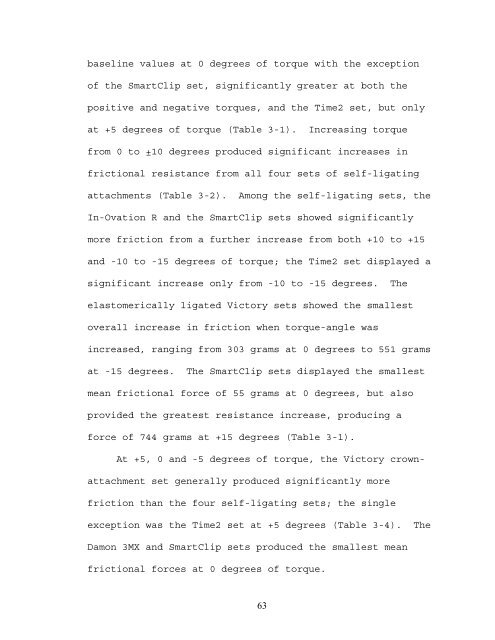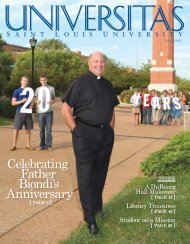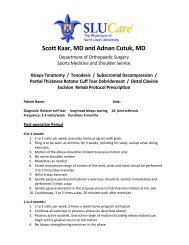The effects of third-order torque and self - Saint Louis University
The effects of third-order torque and self - Saint Louis University
The effects of third-order torque and self - Saint Louis University
You also want an ePaper? Increase the reach of your titles
YUMPU automatically turns print PDFs into web optimized ePapers that Google loves.
aseline values at 0 degrees <strong>of</strong> <strong>torque</strong> with the exception<br />
<strong>of</strong> the SmartClip set, significantly greater at both the<br />
positive <strong>and</strong> negative <strong>torque</strong>s, <strong>and</strong> the Time2 set, but only<br />
at +5 degrees <strong>of</strong> <strong>torque</strong> (Table 3-1). Increasing <strong>torque</strong><br />
from 0 to ±10 degrees produced significant increases in<br />
frictional resistance from all four sets <strong>of</strong> <strong>self</strong>-ligating<br />
attachments (Table 3-2). Among the <strong>self</strong>-ligating sets, the<br />
In-Ovation R <strong>and</strong> the SmartClip sets showed significantly<br />
more friction from a further increase from both +10 to +15<br />
<strong>and</strong> -10 to -15 degrees <strong>of</strong> <strong>torque</strong>; the Time2 set displayed a<br />
significant increase only from -10 to -15 degrees. <strong>The</strong><br />
elastomerically ligated Victory sets showed the smallest<br />
overall increase in friction when <strong>torque</strong>-angle was<br />
increased, ranging from 303 grams at 0 degrees to 551 grams<br />
at -15 degrees. <strong>The</strong> SmartClip sets displayed the smallest<br />
mean frictional force <strong>of</strong> 55 grams at 0 degrees, but also<br />
provided the greatest resistance increase, producing a<br />
force <strong>of</strong> 744 grams at +15 degrees (Table 3-1).<br />
At +5, 0 <strong>and</strong> -5 degrees <strong>of</strong> <strong>torque</strong>, the Victory crown-<br />
attachment set generally produced significantly more<br />
friction than the four <strong>self</strong>-ligating sets; the single<br />
exception was the Time2 set at +5 degrees (Table 3-4). <strong>The</strong><br />
Damon 3MX <strong>and</strong> SmartClip sets produced the smallest mean<br />
frictional forces at 0 degrees <strong>of</strong> <strong>torque</strong>.<br />
63
















